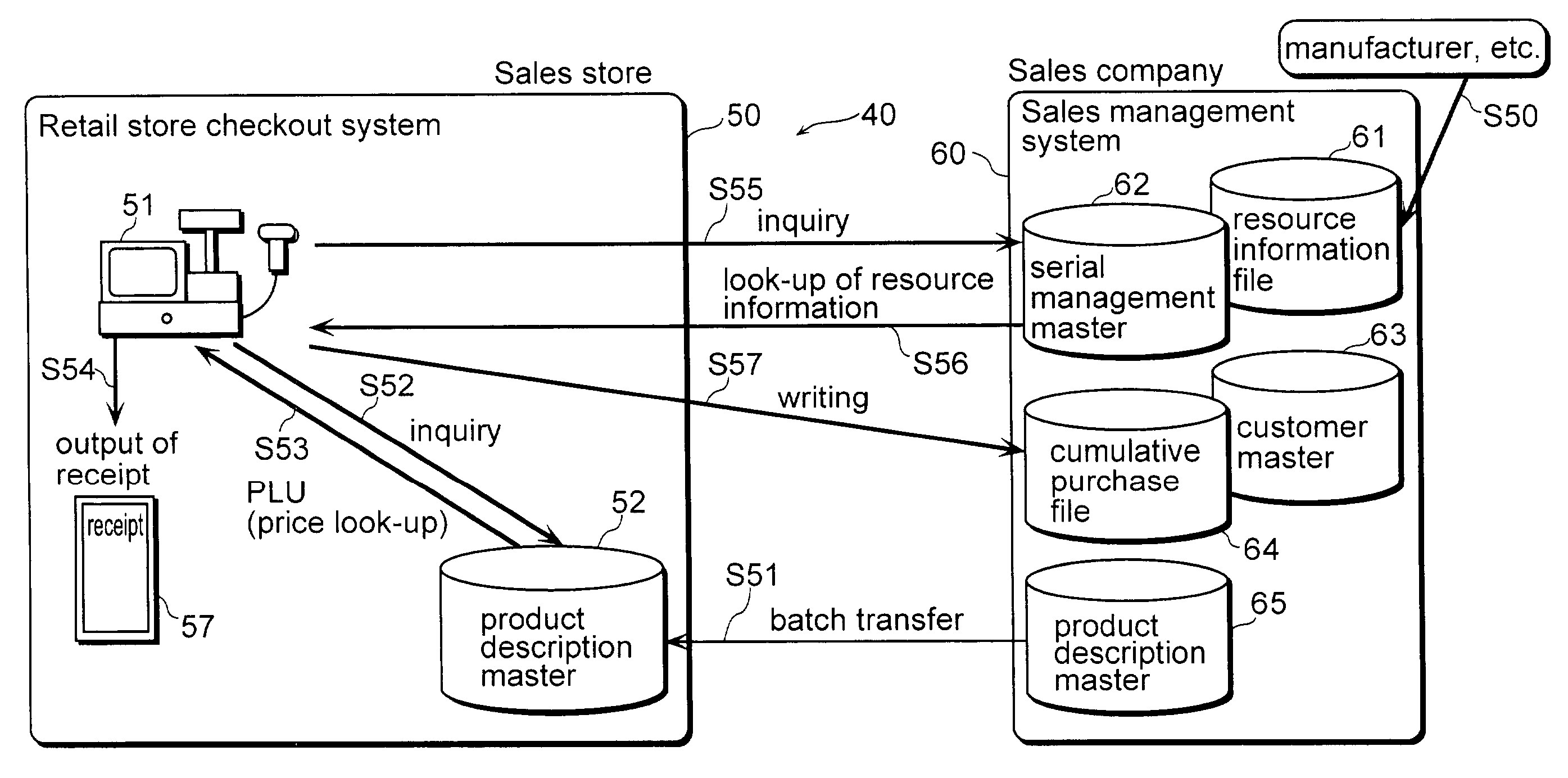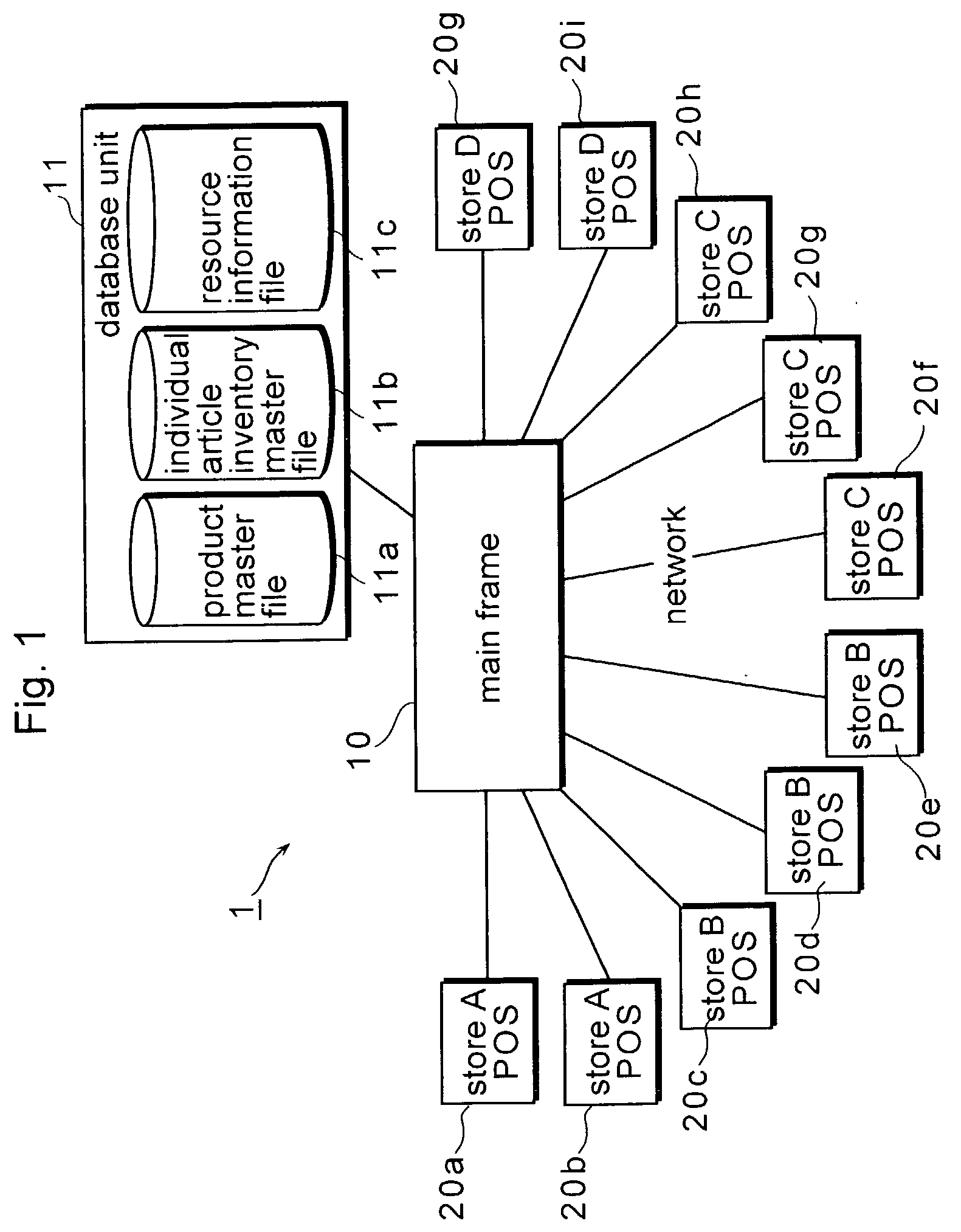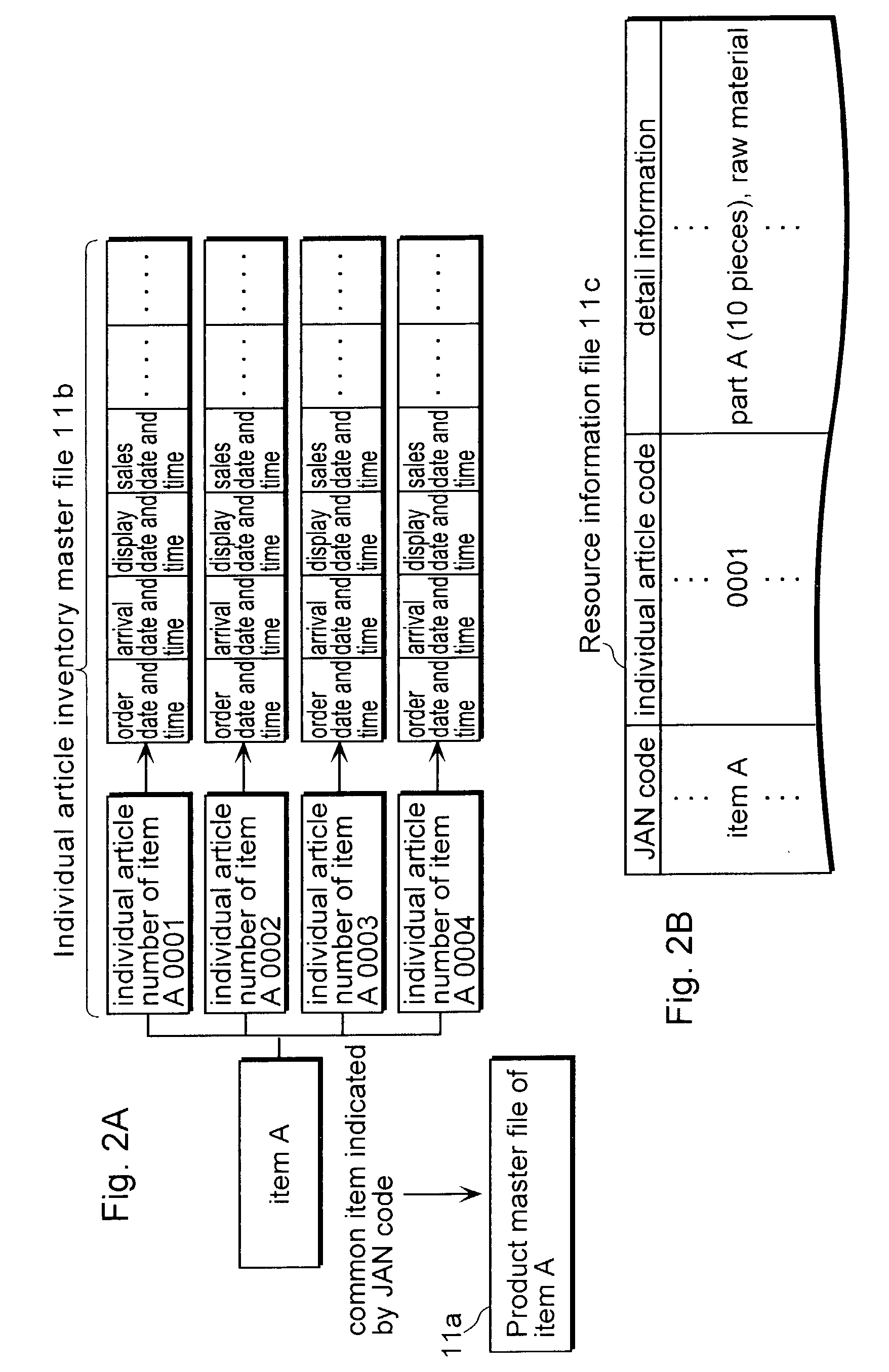Product marked with product code, product information inquiry system, product information inquiry device and POS system
a product information and product technology, applied in the field of product information inquiry system, product information inquiry device and pos system, can solve the problems of product unusable, no more than managing products, and products which have lost their freshness, and achieve easy repair of parts, increase of opportunities, and extension of product life
- Summary
- Abstract
- Description
- Claims
- Application Information
AI Technical Summary
Benefits of technology
Problems solved by technology
Method used
Image
Examples
first embodiment
[0081] (The First Embodiment)
[0082] FIG. 1 is a diagram that shows a configuration of the entire POS system 1 of the first embodiment that is the product information inquiry system according to the present invention. This POS system 1 is a network-centric-type POS system, and includes a main frame 10 that is a management device for managing, as a whole, inventory of products of all the stores in real time and POS terminals 20a.about.20j that are connected to the main frame 10 via a communication network and placed on each store.
[0083] The main frame 10 includes a database unit 11 that stores a product master file 11a on which product description information such as product names and prices are recorded per product code marked on each product, an individual article inventory master file 11b on which storing / retrieving information, etc. per individual article is recorded, a resource information file 11c that is a collection of detail information corresponding to the product codes mark...
second embodiment
[0113] (The Second Embodiment)
[0114] Next, the POS system according to the second embodiment of the present invention will be explained below. Unlike the POS system 1 of the first embodiment that manages the resources of the product on which the product code is marked, including three codes, the item code, the individual article code and the detail code, the POS system of the second embodiment can manage resources of a product 55 on which two codes, that is, the item code (a JAN code 55a) and the individual article code (a serial code 55b), are source-marked, as shown in FIG. 11. Note that the serial code 55b is not a code determined by the sales store of the product on its own judgment, but a code indicating a serial number, etc. which the manufacturer has given to the product uniformly (under a certain rule set down so that the serial number does not overlap the other manufacturer's serial number).
[0115] FIG. 12 is a block diagram that shows a configuration of the POS system in on...
PUM
 Login to View More
Login to View More Abstract
Description
Claims
Application Information
 Login to View More
Login to View More - R&D
- Intellectual Property
- Life Sciences
- Materials
- Tech Scout
- Unparalleled Data Quality
- Higher Quality Content
- 60% Fewer Hallucinations
Browse by: Latest US Patents, China's latest patents, Technical Efficacy Thesaurus, Application Domain, Technology Topic, Popular Technical Reports.
© 2025 PatSnap. All rights reserved.Legal|Privacy policy|Modern Slavery Act Transparency Statement|Sitemap|About US| Contact US: help@patsnap.com



